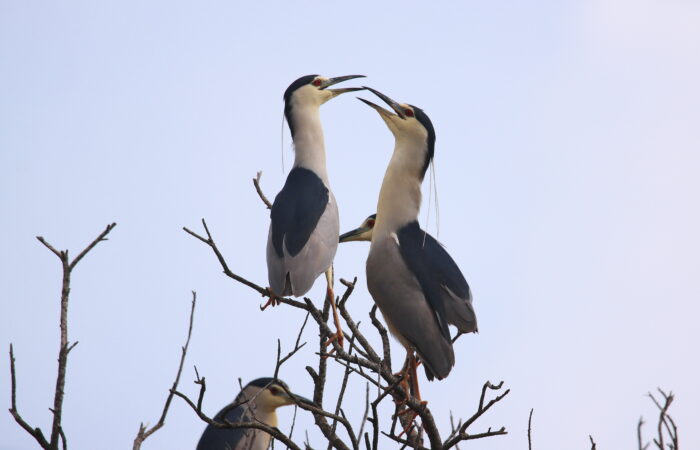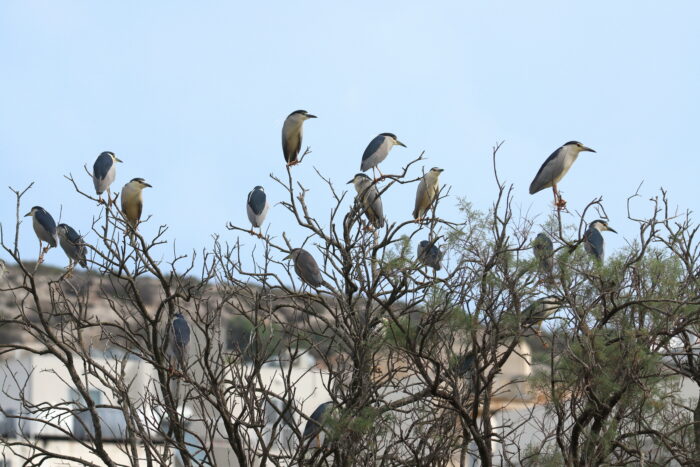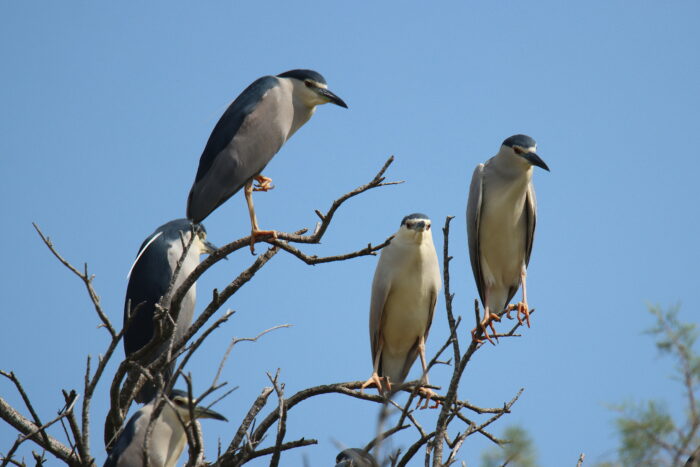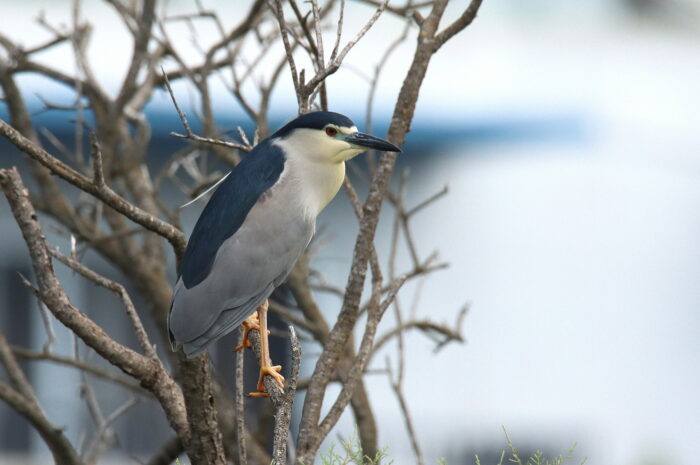The largest flock of Night-herons I ever saw, and possibly the largest ever recorded in Malta, numbered over 180 birds. Most days from mid-August to late September, small flocks of Night-herons stop over at the nature reserve in Simar.
They usually arrive in the early hours and can be heard calling as they settle and melt into the dense cover of reeds and Tamarisk trees, where they spend the day. Late in the afternoon, as the glare gives way to warm colours and the cicadas grow weary, a restless something stirs in them.
Still unseen, they start contact calling. Then, as the sun sets over Pwales, they take off. Getting their bearings, they lift and call and circle and call, setting a southwesterly course that quickly takes them out of sight. On the afternoon of 2 September 2019, they seemed to emerge from every corner of the reserve. As the birds headed southwest, all 180 of them, the dotted line was like ants across a red autumn soil.
Black-crowned Night-heron is the full name given to this bird. The beauty of its plumage lies in the play of contrast between the white belly, light grey wings and tail, and black back and crown. The legs are yellowish and the eye a striking blood red. Like all herons, it has a sturdy, dagger-like bill which it uses to hunt fish, frogs, large insects, and even small reptiles and mammals.
As its name suggests, it is usually active at night and more often heard than seen. Its characteristic call, which sounds like a hoarse croak, is approximated in the Maltese name, Kwakka. Perhaps more accurate and evocative is the scientific name Nycticorax nycticorax, which literally means ‘raven of the night’ – repeated for effect and scientific convention. It’s fascinating about migratory birds that, as they fly over peoples and tongues, they collect monikers.
Writing in 1917, the naturalist Giuseppe Despott noted that Night-herons could often be observed making landfall from the first or second week of August. They are still fairly common passage migrants today and occur in both spring and autumn. When not at the Simar or Għadira Nature Reserves managed by BirdLife Malta, they prefer to settle and roost – during the day, of course – in Pine Trees. Buskett, Miżieb and the Pietà Pine Grove are among their favourite places.
From studies using bird ringing, we know that the birds we see in Malta come mostly from eastern Europe. In fact, the greater part of the birds recovered in Malta were ringed in the nest at heronries (breeding colonies of herons) in the marshes and lakes of Slovenia and southern Hungary.

Every year in July and August, young birds leave the heronries and disperse in all directions. They eventually join the adults on their southward migration, flying southwest from Europe towards their final destination well beyond the Sahara, in tropical West Africa. It’s a journey of at least 5,000 km that can take several weeks to accomplish. Night-herons have a relatively short wingspan, which is probably why they tend to avoid long sea crossings and to rest at oases on their flight across the endless desert. As they fly, they constantly call, making sure the flock stays together.
Exactly how birds pull off these astonishing journeys is not fully understood. Certainly instinct – in this case, the innate ability to be guided by things like the position of the stars and the earth’s magnetic field – plays a part. In a famous and rather unkind experiment a hundred-odd years ago, young shearwaters were removed from an island off Wales and released in Venice.
It was not long before they showed up on exactly the same island where they were born. Instinct aside, it is equally clear that young birds find their way by learning from adults. In North America, generations of captive breeding robbed Whooping Cranes of both their urge to migrate and their sense of direction. They had to be taught the 2,000 km from Wisconsin to Florida by following an ultralight aircraft – and, bizarrely, conservationists in Whooping Crane costumes. No such need for the Night-heron that stopped at Simar on 12 August of this year: it was the only young bird in a flock of 26, meaning it had as company no less than 25 experienced teachers that had made the journey before.

A couple of years ago, researchers from the Upper Silesian Museum in Poland fitted three Night-herons with lightweight GPS transmitters powered by solar-charged batteries. The battery on one device did not work properly at all. Another stopped charging in Sicily, and the third went flat somewhere in the Sahara.
The long feathers on the birds’ backs may have got in the way of the solar panels. Be that as it may, the experiment was not entirely pointless as long as the batteries worked. Satellite-tracking showed that the herons migrated mostly at night, at an average speed of 55 km/h. One bird flew 1,118 km in 36 hours, with one six-hour stop. The one that made it to the Sahara took two months to get there.
Homing is about returning, but it is also about the making of home. For Night-herons, it is a twice-yearly labour that pieces together marshes, Pine groves, oases and tropical ponds. As they fly overhead, unseen but very much heard, they add that unique something to our balmy summer nights. I’d like to think of it as the feeling of being where you belong.
To enjoy the autumn bird migration, visit BirdLife Malta’s Għadira and Simar Nature Reserves which are open from mid-September till May. Salina Nature Reserve and Foresta 2000 are open all year round. Entry to all BirdLife Malta reserves is free of charge, but donations are welcome. BirdLife Malta is committed to provide the best habitats for birds and other wildlife in Malta. Around 140 species of migrating birds are seen annually in the Maltese Islands. Most of the birds seen are migrants, stopping to rest and refuel before continuing their long migration journeys in spring and autumn. For more details click here.
By Mark-Anthony Falzon
This opinion piece was first published by the Times of Malta on 7 September 2022.




